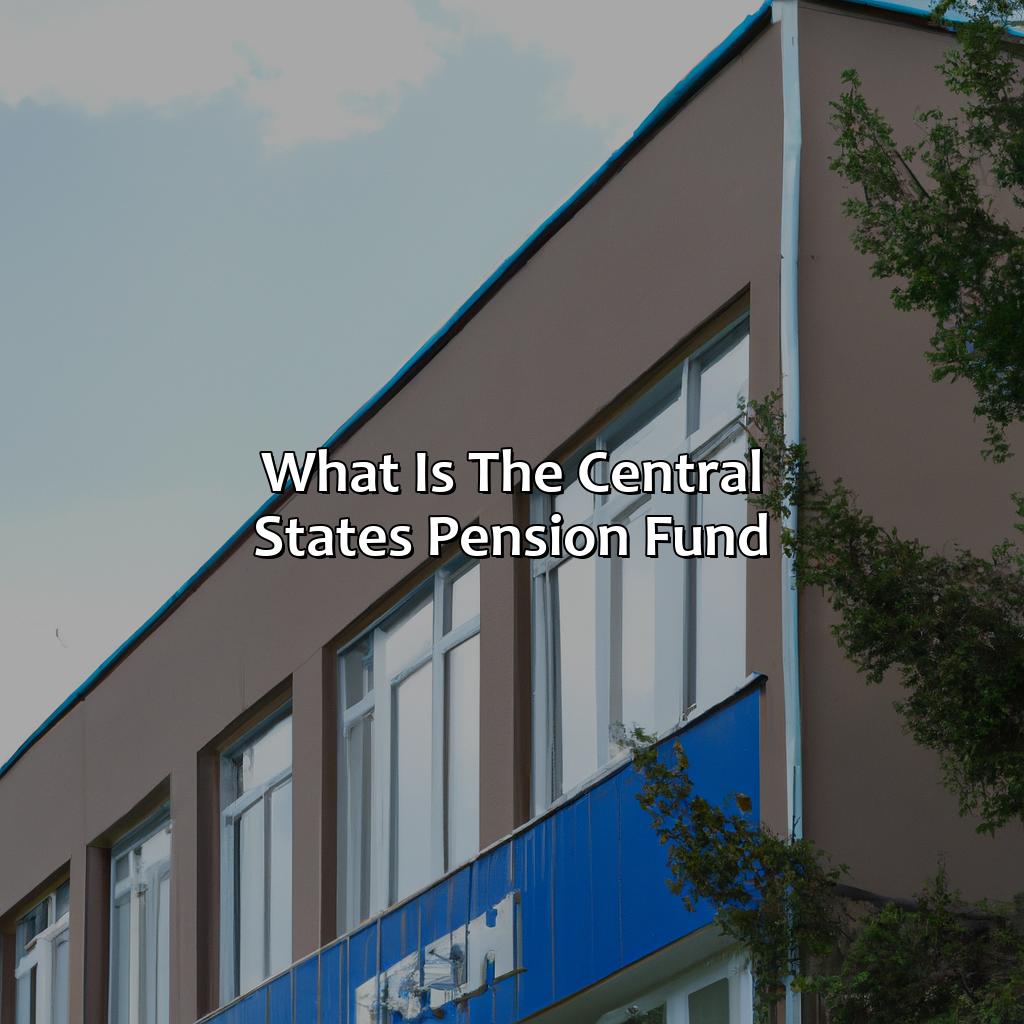What Is The Central States Pension Fund?
Key Takeaways:
- The Central States Pension Fund is a retirement benefits plan established for Teamsters in the Central States region, providing retirement, disability, and death benefits.
- The Fund’s management, including the Board of Trustees and investment strategy, play an essential role in ensuring the Fund’s financial stability and providing benefits to its members.
- The Central States Pension Fund is facing several challenges, including an underfunded pension plan, aging membership, and economic downturns. Proposed solutions include government intervention and pension reform legislation.
Have you ever wondered what happened to your pension funds and how were they invested? In this article, you will learn about the Central States Pension Fund and the security of your retirement savings. With recent changes, you need to know about the Central States Pension Fund and how it affects your future.
Overview of Central States Pension Fund
Central States Pension Fund is a multi-employer pension plan for trucking industry employees, providing retirement, disability and death benefits. With over 400,000 participants and nearly 1,500 contributing employers, the Fund is one of the largest Taft-Hartley plans in the country. The Fund was established in 1955 and covers workers in all 50 states. It is managed by a Board of Trustees composed of representatives of both labor and management, and overseen by the US Department of Labor.
The Fund is facing financial challenges due to demographic changes and shifting industry trends. Pro Tip: If you are a participant in the Central States Pension Fund, regularly monitor the Fund’s status and consult a financial advisor to ensure your retirement plan is on track.
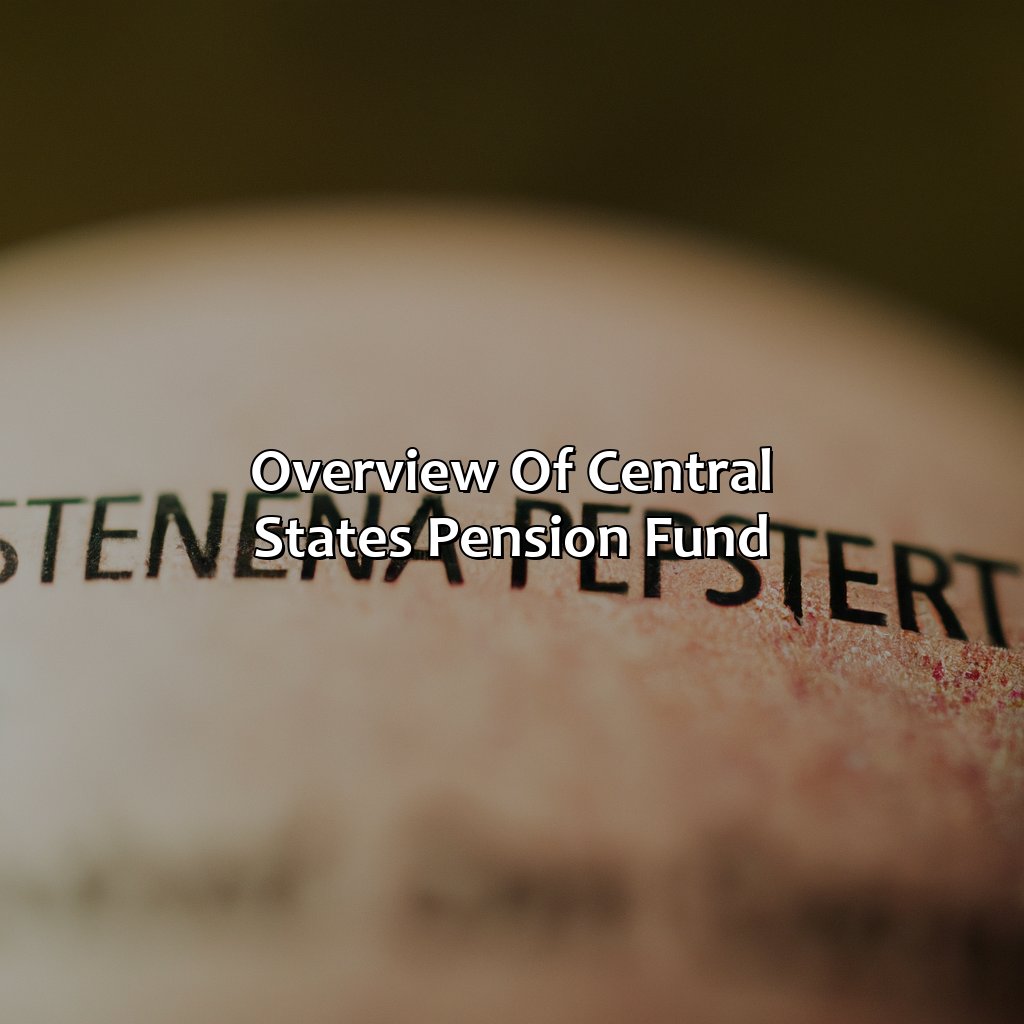
Image credits: retiregenz.com by David Duncun
Established to provide retirement benefits to Teamsters in Central States region
The Central States Pension Fund was established to provide retirement benefits to members of the Teamsters Union in the Central States region. The fund is designed to offer financial security to its members during their retirement years. With a focus on ensuring that all participating members receive the benefits they deserve, the Central States Pension Fund is committed to managing its assets in a responsible and effective manner.
As a multi-employer fund, the Central States Pension Fund pools contributions from numerous participating employers to build retirement savings for their employees. While the fund originally served primarily transportation workers, it now includes a diverse range of industries and occupations. In addition to retirement benefits, the fund also provides disability and survivor benefits to eligible members.
One unique aspect of the Central States Pension Fund’s operations is its focus on maintaining both financial stability and integrity. The fund’s trustees work with independent actuaries and investment professionals to ensure that all investments are managed effectively and responsibly. This proactive approach has helped the fund maintain long-term financial stability and sustainability. Learn more about how pensions are paid out and secured.
In a recent example, the Central States Pension Fund successfully fought to prevent cuts to the retirement benefits of its members. Despite facing financial difficulties during the economic downturn of 2008 and subsequent years, the fund was able to navigate these challenges while continuing to provide retirement benefits to its members. The fund’s commitment to managing its assets in a prudent and fiscally responsible manner has helped ensure its members have access to the benefits they deserve.

Image credits: retiregenz.com by David Arnold
Fund Management
To oversee the Central States Pension Fund, the Board of Trustees has put in place an Investment Strategy. Here, you will get a deeper understanding of the Fund’s management. We’ll take a look at two main components: the Board of Trustees and the Investment Strategy. This will help you grasp how the Central States Pension Fund is managed.
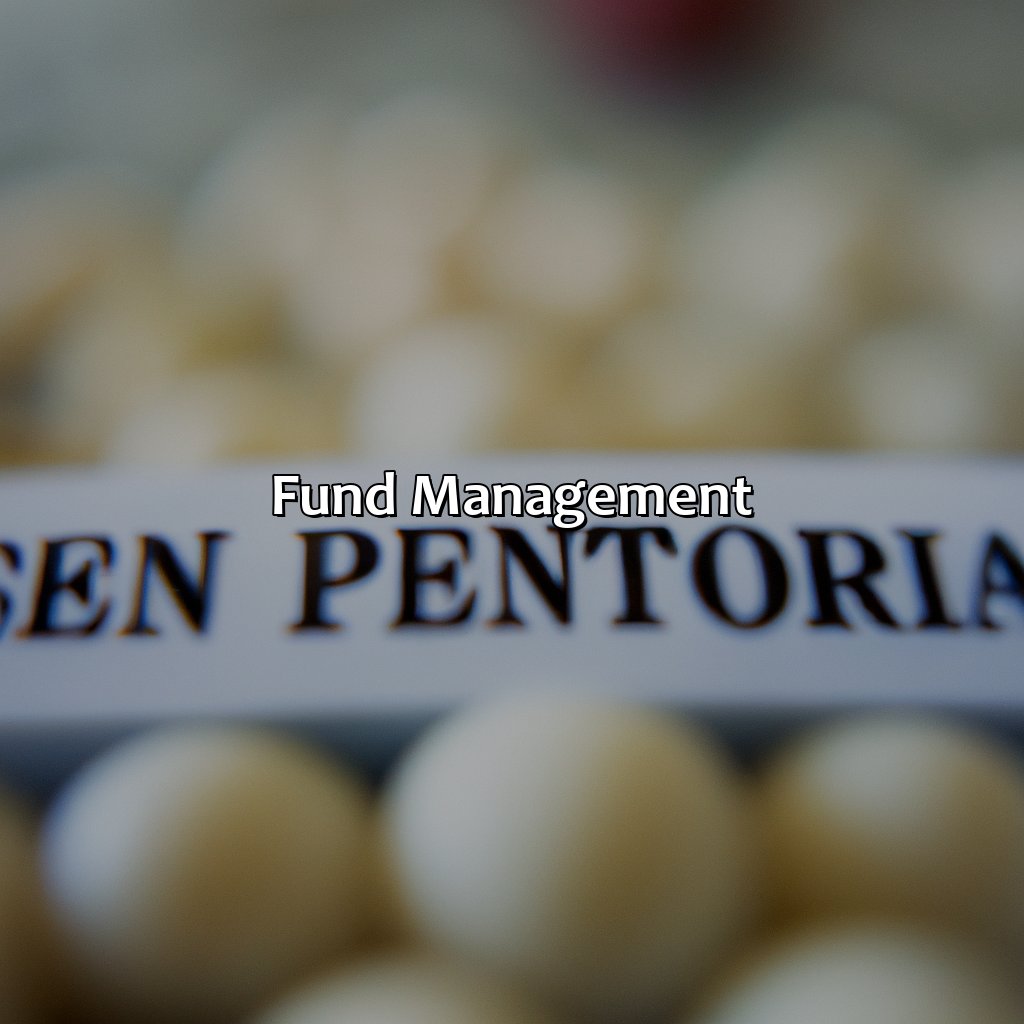
Image credits: retiregenz.com by Harry Woodhock
Board of Trustees
The Governing Body of the Central States Pension Fund is composed of highly experienced persons who are responsible for managing the fund’s financial resources. This body is responsible for making decisions that will positively contribute to the growth and stability of the fund. They work tirelessly to ensure that beneficiaries receive their well-earned benefits on time and help make sure that the fund remains sustainable.
It is worth noting that each trustee has a significant role in driving the fund’s success. They have diverse backgrounds, including finance, investment management and legal experience, which collectively provide balance and adds value to their decision-making processes. The level of critical analysis used during discussions ensures that the best possible outcome is reached.
Their roles include:
- Evaluating consolidated financial statements with an emphasis on an independent auditor s report
- Considering all attendant facts and circumstances surrounding Administration costs, fees, risks & investment performance management
- Examining adherence to governance policies put in place by regulatory bodies, ensuring compliance with existing regulations
Pro Tip: It’s essential to understand Governance structure before investing in any Fund Management Scheme.
Why park your money in a savings account when you can entrust it to the Central States Pension Fund and watch it go on a thrilling adventure of investment strategy?
Investment Strategy
The guiding principles behind the investment approach are of significant interest when discussing the strategies used by insurance companies like the Central States Pension Fund. These principles ensure that investments align with the company’s goals and risk tolerance. Additionally, diversification is key as it reduces exposure to risks associated with individual investments and industries. Finally, active portfolio management ensures regular monitoring necessary to adjust for market changes.
Central States Pension Fund utilizes a prudent investment strategy that balances short-term financial requirements, long-term sustainability and growth objectives, providing retirement security for its participants. The fund employs a variety of asset classes across potentially high-growth industries such as real estate, public equities, fixed-income securities, etc.
It should be noted that the Central States Pension Fund differs in approach from other retirement funds in many ways: most notably in their “heavy tilt” towards less liquid assets such as alts (alternative investments) where they have a higher degree of control over their returns (private equity funds are one example).
One notable facet of the pension fund’s successful legacy can be traced back to its early foundation by James R. Hoffa who laid the groundwork before his fateful disappearance in 1975. Effectively leveraging industry connections built during his tenure as Teamsters President provided them with sufficient reserves to invest on behalf of their members. As a result, Central States Pension Fund has been able to capitalize on a wide range of investment opportunities over decades continually adapting to generate stable returns upon which their millions of retiring workers depend.
Retirement just got a lot less terrifying, thanks to the benefits offered by the Central States Pension Fund.
Benefits provided by the Central States Pension Fund
To grasp the advantages from Central States Pension Fund, we must dig into each area. Gaze into what the Fund offers to those retiring, disability coverage for its members, and death benefits for members and their families. Get an exact understanding of the benefits!
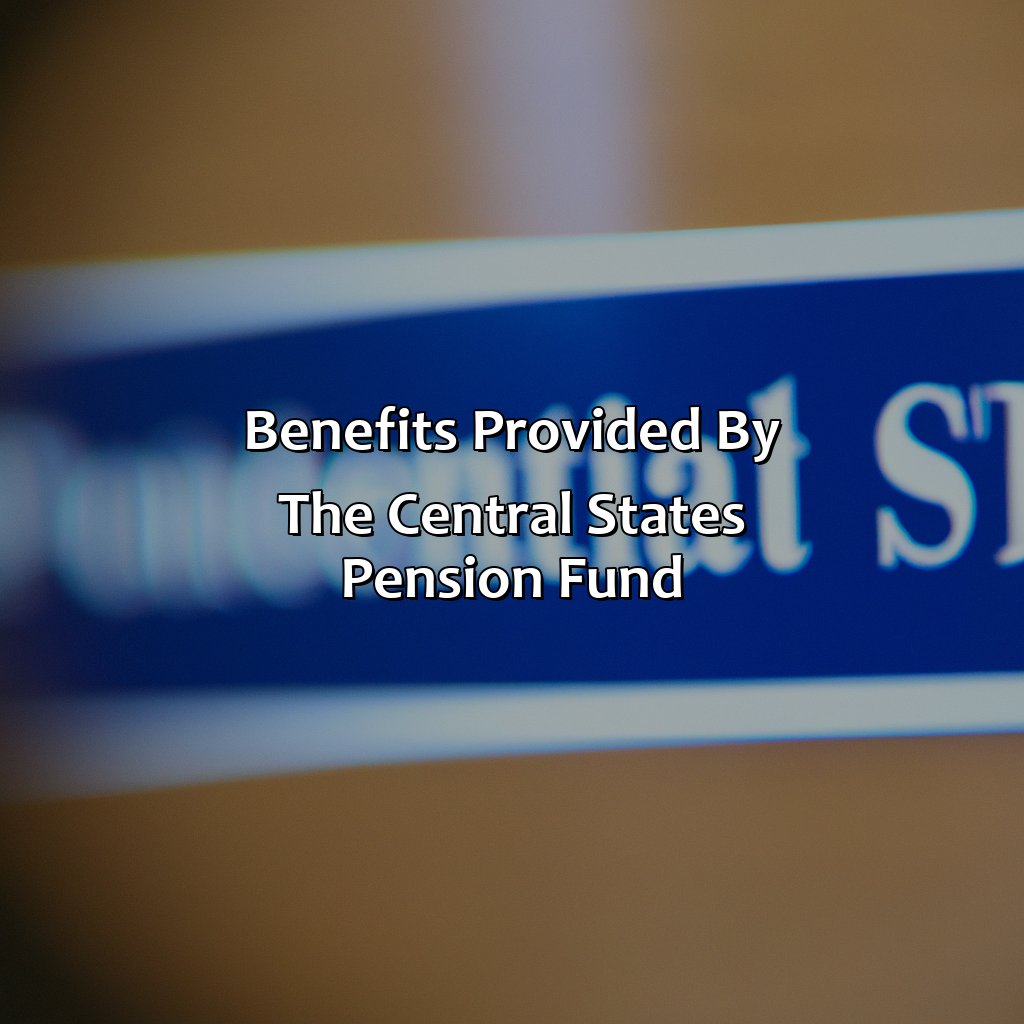
Image credits: retiregenz.com by Harry Washington
Retirement Benefits
The following are some of the Retirement Benefits offered by the Central States Pension Fund:
- Monthly Pension Benefit
- Supplemental Pension Benefit
- Early Retirement Subsidy Benefit
- Disability Pension Benefit
- Survivor’s Pension Benefit
- Health Insurance Benefits
The monthly pension benefit supports retired individuals by providing a fixed income every month. They can also opt for a lump-sum payment instead of monthly payments. The supplemental pension benefit is paid in addition to the monthly pension benefit, providing financial stability and security for retirees. The early retirement subsidy benefit allows those who retire early to receive reduced benefits before reaching the full retirement age.
The disability pension benefit provides income to individuals who cannot work due to disabilities or illness, and the survivor’s pension benefit ensures that the surviving spouse receives a monthly income after the death of their spouse.
Apart from these benefits, members can also receive health insurance benefits that assist with medical expenses such as prescriptions, doctor visits, and hospital stays. Are you wondering about retirement benefits? Learn more about UK state pension here.
Central States Pension Fund also provides educational resources and financial counseling to its members, ensuring they make informed financial decisions related to Retirement Benefits.
Regarding transaction details, opting for Lump Sum distribution may affect social security disability eligibility.
A former truck driver had relied on Central State’s Pension Fund throughout his career but didn’t know about disability pension until he was diagnosed with cancer making him unable to return to work as a driver. The Disability Pension allowed him financial freedom without any stress during his treatment period and recovery time.
To understand how pensions work, one can learn about pension funds and their workings.
Who needs working limbs when you have disability benefits from the Central States Pension Fund?
Disability Benefits
Individuals who are part of the Central States Pension Fund have access to Disability Compensation. This benefit provides financial assistance to those who suffer from permanent, total disabilities that prevent them from working. The Central States Pension Fund determines eligibility based on medical certification and work history.
Upon approval, members receive monthly payments equivalent to the amount they would receive if they had retired at normal retirement age. Additionally, members can secure Social Security disability benefits in conjunction with Disability Compensation through pension funds.
It’s important to note that this benefit is only available to those who have earned enough credit hours and worked long enough to qualify for this benefit within the Central States Pension Fund. If you are wondering which of the following IRAs provides a pension for employees, then the Central States Pension Fund may be a good option to consider.
According to the official website of the Central States Pension Fund, disability benefits are subject to periodic reviews by a medical advisor appointed by the fund, ensuring ongoing compensation for policyholders. If you’re curious about the role of pension funds in the stock market, you may want to know what percentage of the stock market is owned by pension funds.
Source: centralstatespension.org
Who knew that being dead could come with such great perks? Central States Pension Fund has got you covered even in the afterlife.
Death Benefits
Those who are part of the Central States Pension Fund may receive benefits after their passing. Here are some ways that the fund provides support to beneficiaries:
- Surviving spouses may receive a monthly death benefit equal to 50% of what the participant was receiving at the time of their death.
- If there is no surviving spouse, children under 18 (or up to age 23 if they are full-time students) may receive a monthly benefit until they reach adulthood.
- In some cases, a lump sum payment may be made to designated beneficiaries or an estate.
Notably, these death benefits can provide significant financial assistance to loved ones who have lost a participant in the fund. It is important to note that specific rules and qualifications apply for each type of benefit.
Interestingly, as with other types of pension funds, Central States has faced its share of challenges over the years. In fact, during the early 2000s, allegations of mismanagement and corruption cast doubts on the future viability of the fund. Thankfully, major reforms were ultimately implemented which helped stabilize it for participants – including those who rely upon its death benefits today.
These challenges are so tough, even the Central States Pension Fund could use a pension fund.
Challenges faced by the Central States Pension Fund
Wanna learn about the troubles faced by the Central States Pension Fund? It’s got an underfunded pension system, an aging membership, and a sour economy. This has been leading to money problems for many of its members, so let’s find out why!

Image credits: retiregenz.com by James Arnold
Underfunded Pension Plan
The Central States Pension Fund is facing the challenge of having an insufficiently funded pension plan. The fund currently lacks enough money to pay for all its promised pension benefits to its members and retirees. This situation has arisen due to a variety of reasons, including market fluctuations and decreased employer contributions.
Moreover, if you are a member of the Central States Pension Fund, it’s essential to know how to find your pension information. The underfunding of the pension plan has resulted in numerous challenges for the fund. Members and retirees are at risk of losing their promised benefits if the fund becomes insolvent, which can have serious financial and emotional implications for them and their families.
In addition, the options available to address this issue are limited. While increasing contributions from employers is one solution, it would require significant increases that many companies might not be willing or able to make. Reducing benefits also presents challenges, as it can impact millions of individuals counting on their promised pensions.
According to a recent report by Forbes, the Central States Pension Fund is facing substantial shortfalls in funding levels that could lead it to run out of money within 12 years if corrective measures are not taken soon.
It is important to understand who manages pension funds to ensure they are being managed properly to avoid such situations in the future.
Looks like the Central States Pension Fund is aging faster than its members.
Aging Membership
With its membership growing older, the Central States Pension Fund is facing significant challenges. The fund, which covers over 400,000 members and retirees in the trucking and related industries, has a rapidly aging population that is increasing the demand for benefits payouts. This rising cost of benefits coupled with a declining number of active workers contributing to the fund has made it difficult to sustain the long-term financial stability of the fund.
To address these challenges, the Central States Pension Fund has implemented several changes such as reducing disability benefits and increasing contributions from employers and employees. Additionally, they are exploring options to reduce healthcare costs for their members.
While these changes have helped to mitigate some of the immediate financial pressures, there are still concerns about how future benefit payouts will be sustained as more members enter retirement age. The fund is currently working on developing new strategies to manage these challenges and ensure long-term stability for its beneficiaries.
Pro Tip: If you’re a member of the Central States Pension Fund or any pension fund, it’s important to regularly check your benefits statements and plan ahead for retirement.
Pension funds may be feeling the economic downturn, but at least they can still afford to buy a vowel.
Economic Downturn
The financial crisis poses substantial challenges to the Central States Pension Fund (CSPF). The economic collapse has resulted in significant losses that have put pressure on the fund’s ability to meet its obligations to retirees. The decline in asset values and low interest rates have made it harder for pension funds like CSPF to generate income and sustain payouts.
The downturn has put significant pressure on the viability of the plan, leading to significant cuts in benefits, freezes on new benefit accruals for active members, and large increases in employer contribution costs. The CSPF is also grappling with a large number of underfunded multiemployer pension plans, which have created immense stress on funding levels. Wondering about pension sharing order? Read more to know!
Additionally, continuous lobbying efforts from corporate interests that seek legislative relief or call for contributions by taxpayers are further complicating the situation. Though there is an urgent need for legislation that offers long-term solutions, it remains unclear whether lawmakers will take action quickly enough to restore trust in these institutions before it’s too late.
These struggles within CSPF are not isolated; they affect millions of Americans who have spent their entire working lives building toward secure retirements. One example is a retired Teamster member named Robert Campbell from Lake County, Illinois – who served as a member of the plan’s Board of Trustees for nearly 20 years – who says he fears what may happen if nothing is done before it’s too late. Without intervention, many retirees could face devastating financial circumstances as they age – and be forced into poverty.
Will proposed solutions fix the Central States Pension Fund? We’ll know for sure when pigs fly.
Proposed Solutions
Issues with the Central States Pension Fund beg for solutions. Government intervention is one way to help the fund recover. Alternatively, pension reform legislation could bring about changes within the pension system to guarantee long-term stability.

Image credits: retiregenz.com by Harry Jones
Government intervention
As the ongoing Pension Fund crisis in the central states poses a severe threat to millions of Americans, the government is considering different approaches to intervene. One proposed solution is direct investment by the federal government. It involves investing money from the Treasury into underfunded pensions as an effort to ensure that retirees receive their benefits.
Direct investment would risk taxpayer’s money because there is no guarantee that those pensions will generate returns on investments called for by direct investment regulations. Still, it could be beneficial because it ensures that people who have paid into pension funds their entire working lives do not lose their investments.
Another proposal the government has made is to create new retirement plans for individuals in these funds and consider unique risk-sharing models, including shared contributions between employers, workers and possibly taxpayers. This proposal also attempts to correct some of the flaws with defined-benefit pension plans by sharing risks across multiple stakeholders.
Proposals could work together if direct investment covers some portion of underfunding initially before implementing discussion around shared-risk retirement plan models. Dealing with possible objections from unions and employers while maintaining effective support for retirees’ benefits remains a challenge, but prompt action must solve this significant financial problem of our era.
Looks like it’s finally time for the government to put their money where their retirees are.
Pension Reform Legislation
Legislative actions to improve pension funding are critical. Pension Reform refers to the measures taken by lawmakers to prevent or alleviate pension fund deficits. One possible solution could be raising taxes, while another involves investing in higher-yield assets. However, these solutions’ effectiveness depends on the size of the fund’s deficit and its asset allocation.
The Pension Reform Legislation is vital to address issues surrounding the Central States Pension Fund as it faces insolvency. Consequently, several strikes have occurred, and retirees have protested for relief and remedies. Lawmakers must take action soon as millions of Americans rely on their pensions and healthcare coverage.
Reportedly, over 400,000 retirees that belong to active-service members face significant benefit cuts if no federal aid is granted for this pension fund in fiscal year 2020.
Looks like the future of the Central States Pension Fund is about as secure as a Jenga tower built by a drunk toddler.
Future of the Central States Pension Fund
Peep the future of the Central States Pension Fund. We wanna focus on solutions to survive and dodge potential insolvency. Let’s take a closer look.
This Fund has challenges. Essential to recognize the issues and check out possible solutions to beat potential plan insolvency.
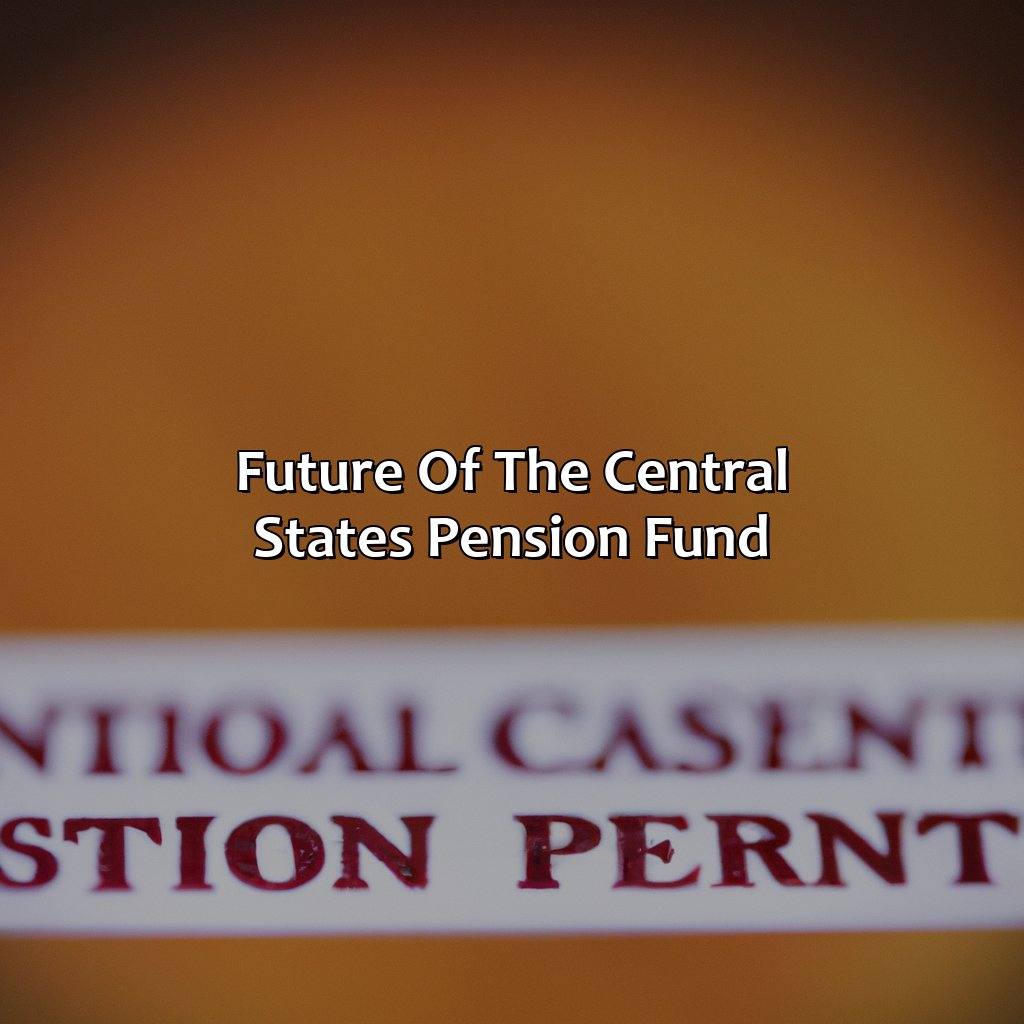
Image credits: retiregenz.com by Harry Washington
Seeking Solutions to Survive
The Central States Pension Fund is grappling with its future amidst rapidly changing demographics and uncertain economic times. To ensure the Fund’s survival, the Board is seeking innovative solutions to protect participants’ benefits and meet ongoing obligations while navigating market volatility. These measures may include increased contributions from employers or adjustments to payouts for retirees.
As part of its efforts to address this challenge, the Fund has engaged in discussions with various stakeholders, including industry experts and federal regulators. Their collective input may inform a strategy that balances the interests of all parties involved and provides stability for years to come.
While the current situation may be daunting, it is worth noting that the Central States Pension Fund has a long history of serving American workers since 1955. With a current membership of over 400,000 members across various industries, the Fund remains a vital pillar of retirement security for many individuals and families.
According to a recent report by Reuters, “The Central States Pension Plan will run out of money by 2025 if Congress doesn’t raise federally required premiums paid by its roughly 1.5 million participants.” This underscores the urgency of finding workable solutions sooner rather than later.
When it comes to the Central States Pension Fund, the only thing potentially more insolvent than the plan itself is my bank account after the holidays.
Potential for Plan Insolvency
The Central States Pension Fund is facing a potential risk of plan insolvency. The fund provides retirement benefits to more than 400,000 participants and has been experiencing financial difficulties for several years due mainly to declining membership and investment returns.
The situation is compounded by the fact that many of the employers who contribute to the fund have gone out of business or withdrawn from the fund. This has resulted in a significant reduction in contributions, leaving the fund with fewer resources to pay benefits.
To address the potential for plan insolvency, various measures have been proposed. For instance, some suggest reducing benefits to retirees, while others argue for an increase in contributions by employers or introducing new revenue sources. Another suggestion is to merge the Central States Pension Fund with other multiemployer pension plans to create larger and more stable funds.
If you are wondering about how many pension plans are there in the US, do check out our article.
Reducing benefits might be unpopular among retirees but could help ensure that future obligations can be met. Increasing contributions would increase fund resources; however, this could also lead to higher costs for employers and reduced competitiveness compared with businesses not contributing (if investing instead). Moving towards new revenue sources such as real estate or infrastructure investments can help add diversity (revenue-creating activities beyond stocks) and introduce long-term growth capabilities.
Five Facts About the Central States Pension Fund:
- ✅ The Central States Pension Fund is a multi-employer pension plan. (Source: Investopedia)
- ✅ The fund was established in 1955 to provide retirement benefits to Teamsters. (Source: Central States Pension Fund)
- ✅ The fund currently covers more than 400,000 participants and beneficiaries. (Source: Central States Pension Fund)
- ✅ The fund is facing financial difficulties and is projected to become insolvent in the coming years. (Source: Pension Rights Center)
- ✅ The federal government has proposed legislation to address the funding shortfall and protect benefits for the fund’s participants. (Source: U.S. House of Representatives)
FAQs about What Is The Central States Pension Fund?
What is the Central States Pension Fund?
The Central States Pension Fund is a multi-employer pension plan that provides retirement, disability, and death benefits to over 400,000 active and retired workers in various industries across the United States.
Who can participate in the Central States Pension Fund?
The Central States Pension Fund is open to workers in various industries, such as trucking, construction, and mining, who are covered by a collective bargaining agreement with one of the participating employers in the fund.
How is the Central States Pension Fund funded?
The Central States Pension Fund is funded by contributions from participating employers, investment income, and federal financial assistance. The contributions are based on a percentage of covered employees’ wages and vary by industry.
What benefits does the Central States Pension Fund provide?
The Central States Pension Fund provides retirement, disability, and death benefits to eligible participants. The retirement benefits are based on the length of service, contributions made, and the average of the highest five years of earnings.
What happens to my Central States Pension Fund benefits if my employer goes out of business?
The Central States Pension Fund is protected by the Pension Benefit Guaranty Corporation (PBGC), which is a federal agency that guarantees the payment of certain pension benefits in case of plan termination or insolvency of the employer. However, the PBGC’s guarantee is subject to certain limitations and may not cover all of the benefits.
Can I transfer my Central States Pension Fund benefits to another retirement plan?
No, you cannot transfer your Central States Pension Fund benefits to another retirement plan. The benefits are only payable from the Central States Pension Fund and cannot be assigned, transferred, or pledged to anyone else.
